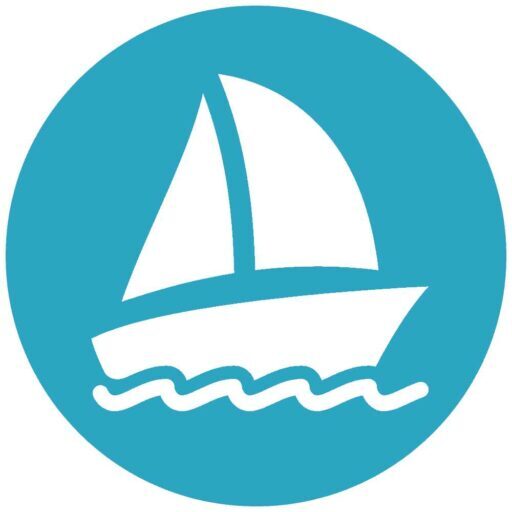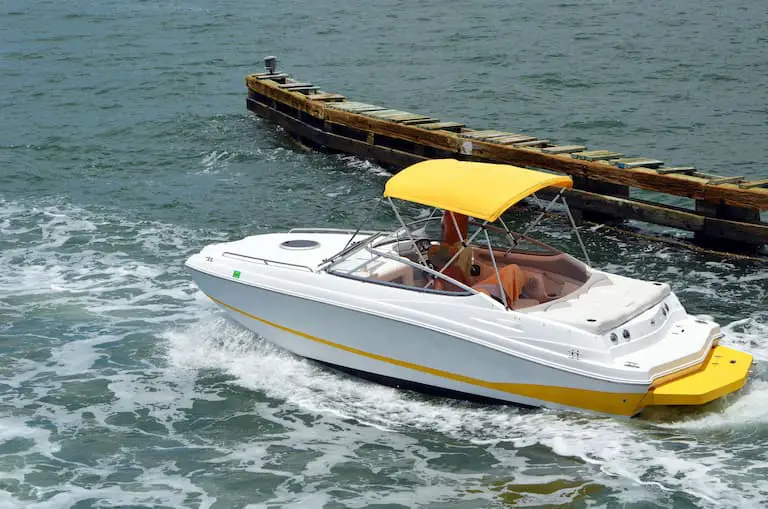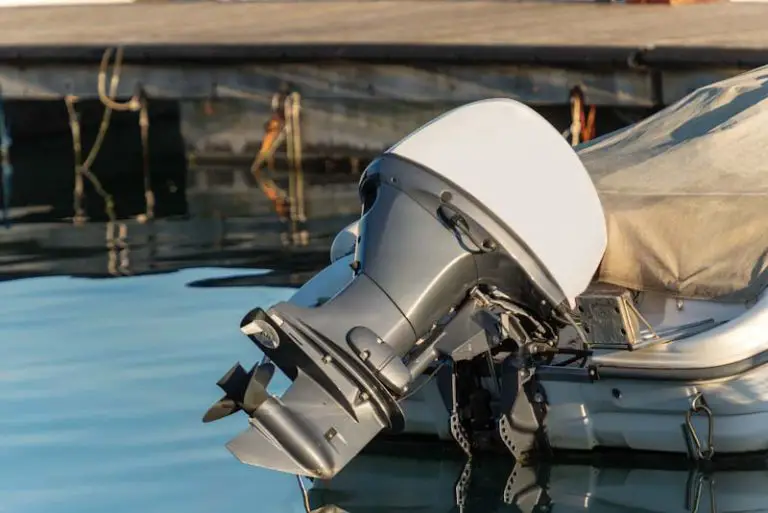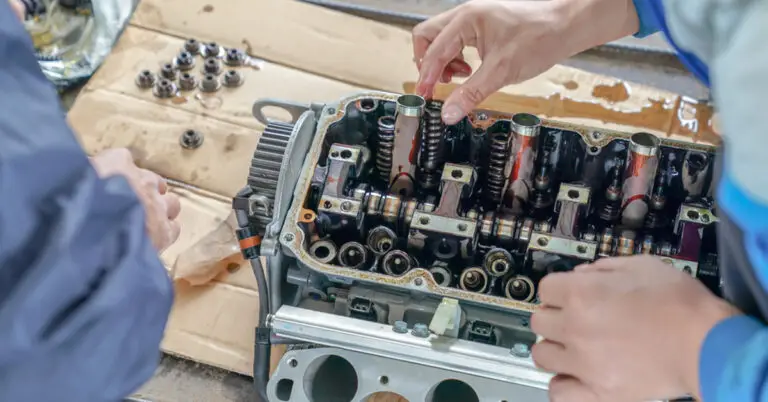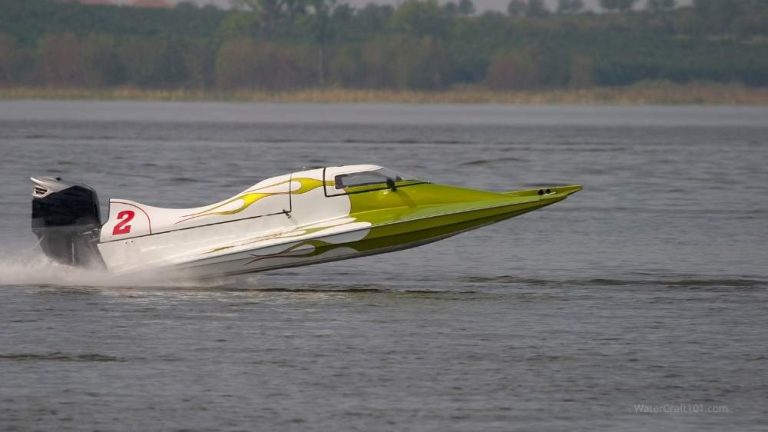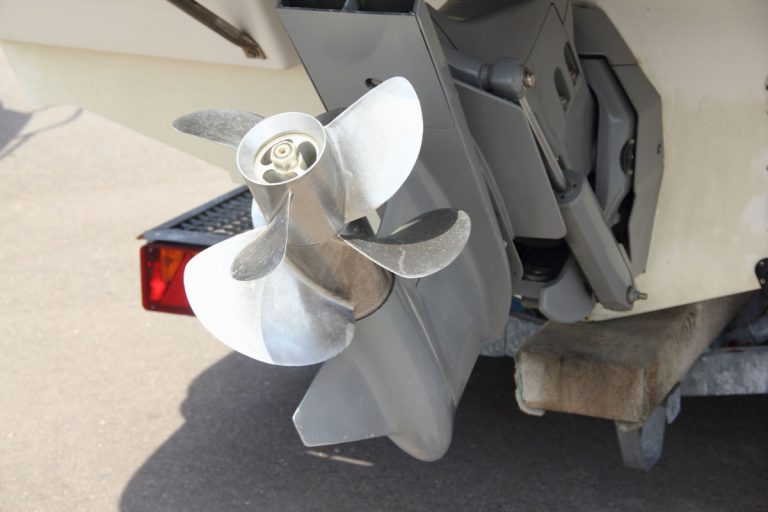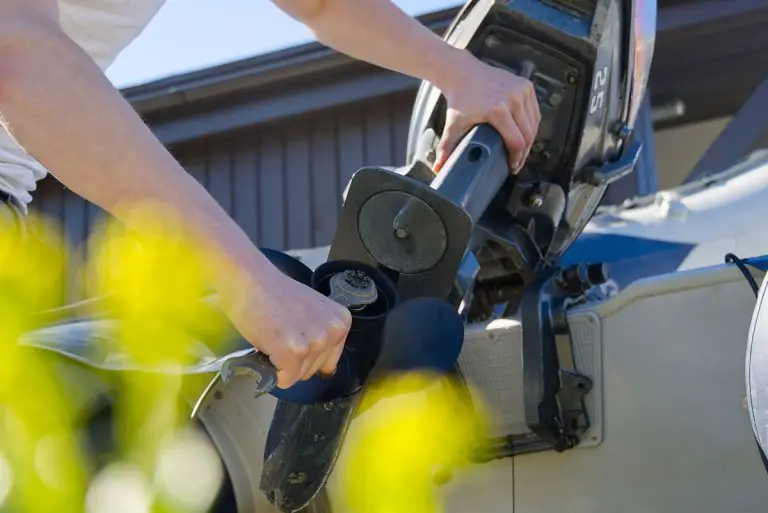Inboard vs. Outboard: Which Is Better for Salt Water?
Over the last few years, the boating community has gone back and forth between inboard and outboard engines. Inboard motorboat engines are installed inside the boat, while outboards are outside the boat on its backside. Although it’s easy to tell them apart, you might be wondering which engine is better for saltwater.
Outboard engines are better for saltwater. While outboard engines are as prone to saltwater corrosion as inboards, boaters opt for them because it’s easy to trim them up out of the water to prevent saltwater from creating salt build-up. They are also easier to clean and maintain than inboards.
Let’s discuss the difference between these boat engines and weigh their pros and cons against each other. I’ll also explain why an outboard engine is probably a better option to use for saltwater sailing and cruising.
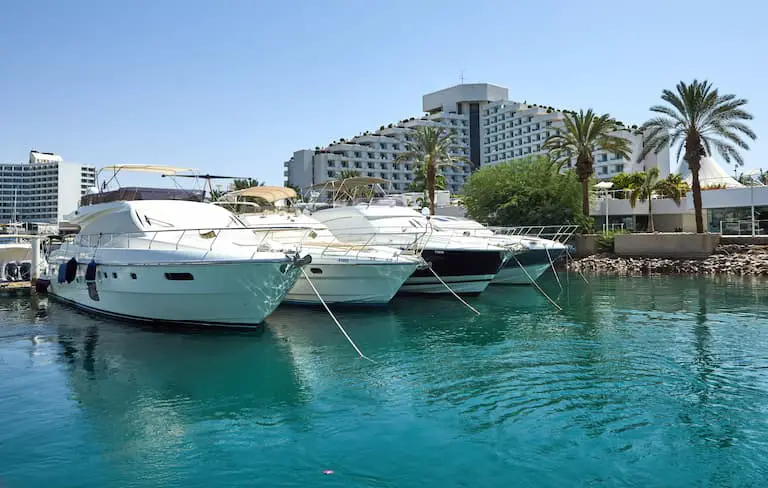
What Are Inboards and Outboards?
Inboards and outboards are two of the four motor engines available for recreational vessels. There is no good or bad type. However, people choose boats with different engine types based on varying factors since each one is best for specific circumstances.
The other two motorboat engines include the jet drive and the sterndrive. The sterndrive is also known as the inboard/outboard type.
However, inboard and outboard motors are the most common and popular types, so you’ll probably want to choose between one of them.
What Are Inboard Motor Engine Boats?
An inboard boat is a motorboat with its engine situated inside the vessel hence the name with the prefix, ‘in.’ So, when you use one of these motorboats, you can expect the entire motor to be inside the boat.
An inboard motor has only the shaft protruding outside, but it’s not so far as to protrude from the back of the vessel. The engine cannot be easily changed or replaced, unlike the outboard style motor.
The shaft has a propeller that will help the boat move in the direction required. Compared to its counterpart, the inboard/outboard or sterndrive, the engine takes up more space in the boat’s interior.
Inboard boats can also come in two propulsion systems variations: the V-drive variation and the D-drive variation. The D-drive or direct drive propelled inboard variation has the engine placed near the boat’s center. This engine type is quite simple, yet it also quickly produces efficient energy to push the boat forward.
D-drive style types are noisy when it comes to taking a ride on the boat because of the location of the engine. The engine also takes up almost the entire middle section of the vessel. Due to this, owners of these boats will have to adapt to less storage space and even sitting space.
If one doesn’t mind, they can opt to sit on the uneven middle surface. However, this might be uncomfortable, especially on longer boating trips and when the water is more turbulent.
The V-drive style of propeller is further back in the boat’s aft. Unlike the D-drive, there is no odd protrusion in the middle of the vessel, as the engine is covered up properly, almost imitating the style of a sterndrive motorboat.
The V-drive has more storage space available because of the engine’s location and the better sitting arrangement. It is perfect for water sports like waterskiing. The downside of this boat type is that it is heavier to carry because of the uneven weight distribution at the back of the boat. They are also usually quite expensive.
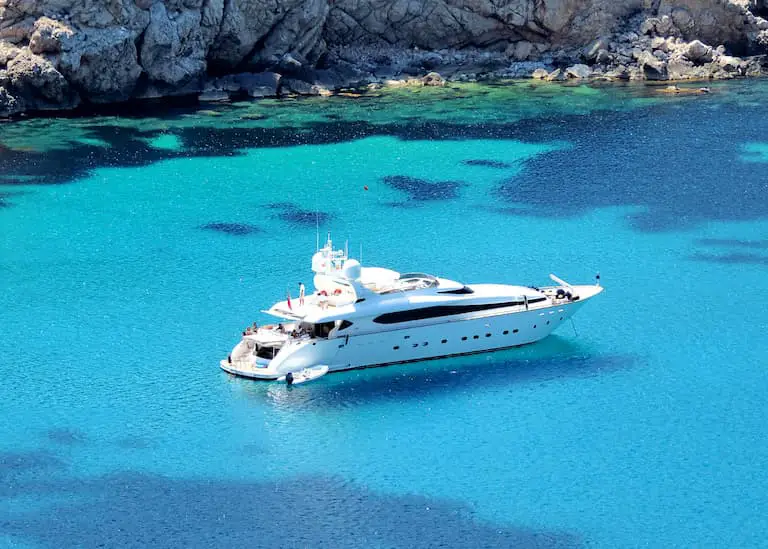
What To Expect When You Consider an Inboard Style Motor
Are you thinking of choosing an inboard style of engine motor for your boat? Here are the things you need to keep in mind for this style of boat motor:
Pros of Inboard Engines
- Inboards are the perfect selection for people that love to do water sports behind the boat, such as waterskiing or wakeboarding.
- It is safe to have swimmers behind the boat because the prop doesn’t stick out.
- Inboards are more durable and can serve the owner for a longer time than any other engine type.
- Inboards are great for deeper water and longer distances.
- They look nice and offer an elegant aesthetic to the boat owner.
Cons of Inboard Engines
- Inboard engines make it more difficult to dock or move in a straight line. If you are a beginner at boating, you might want to keep this in mind.
- They usually cost far more money than other motorboat engines.
- There is less storage and sitting space because of the location of the engine that crowds the boat.
- It is not easy to clean the engine parts and spot signs of corrosion on the interior since you can’t look directly at the motor without flipping the boat or opening up the compartment of a D-drive. That makes them prone to saltwater corrosion.
- You cannot easily tilt the boat, so one must be careful if they are doing complex maneuvers.
- Self-maintenance is difficult.
- In the case of a water body with huge rocks near the shore, the shaft is at risk of getting damaged because it is fixed in one position and cannot be tilted.
Related: 10 Reasons Why Inboard Boats Are So Expensive
Outboard Boat Engines
Unlike inboard motor engines, outboard motors sit outside the boat, at the back. The outboard system runs by having the boater use a wheel to steer the vessel. The entire engine moves as the shaft and propeller take the boat in the direction that the boater wishes to go.
When it comes to saltwater, outboard engines have an extra unique advantage – you can trim the motor up and out of the water.
Outboard engines are movable, and you can trim them to different levels – higher for shallow water and lower for deeper water. This maneuverability prevents the engine from getting damaged in the case of rocks in shallow water.
Trimming involves tilting the propeller shaft of your boat’s engine relative to the water’s surface. If you’re planning to leave the vessel in the water for a couple of days or weeks, this ability can make a massive difference to your engine’s longevity.
In inboard engines, trimming is not as straightforward. When the boat is in water for too long, its engine will corrode and accumulate buildup. That’s the main factor that makes them less-than-ideal for seafaring.
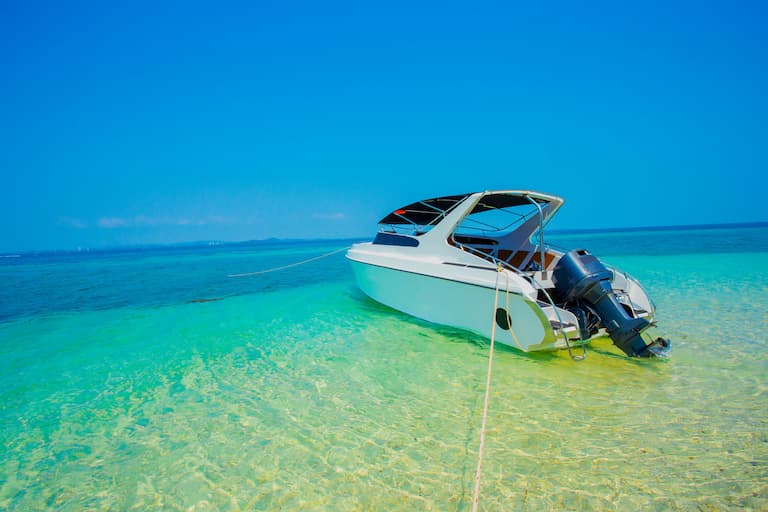
What To Expect When You Consider an Outboard Motor Style Engine
There are an increasing number of people opting for the outboard style, and here are some of the reasons it might be the preferred style for you.
Pros of Outboard Motors
- They are easier to work on if you like to do self-maintenance.
- Outboards are great for shallow water since the engine tilts to different levels, preventing damage from hitting rocks.
- They are the perfect choice for fishermen.
- You can more easily replace the engine motor in case of corrosion or damage.
- They are more manageable to use for tricky maneuvers.
- Boats with outboard engines have ample storage and sitting space in the boat since the engine is at the back of the vessel.
- Overall, they are affordable, and it’s even possible to get a used one in good condition that will last you a long time, according to this video:
Cons of Outboard Motors
- They are pretty loud since the engine is outside.
- Because they encounter water that could have impurities, they smell pretty bad.
- They produce less power than an inboard and require more motors if a boater wants more power.
- They are not the ideal choice for people interested in water sports.
- They are not safe for swimmers. They can be a potential hazard to a swimmer at the back of the boat.
- There is no luxury seating area at the back of the boat.
- In the long run, they eventually become costly as the owner might find themselves replacing the motor once every few years due to corrosion or damage.
As we have explored, inboards and outboards have divergent advantages and disadvantages, therefore it is tough to jump to a conclusion and say that one is better than the other.
The right choice depends on the user’s individual needs and tolerance to the cons of a particular style of motor. Here is a video that discusses the matter:
Choosing the right type of motorboat engine for saltwater will depend on your budget, the variety of boating activities you will participate in, and your level of experience in handling marine vessels. It will also depend on the kind of water you will be boating through to enjoy those activities.
Related: How To Start an Outboard Motor That’s Been Sitting (Fast!)
The Effect of Different Water Types on Boat Engines
Water type plays a significant role in what kind of motorboat will be better for you. Some waters, such as the ocean waters, are salty. Others, such as lake water, are not.
Motorboat engines do all the work in powering the vessel. Therefore, they work even harder when the water is more turbulent and full of obstructions like weeds or rocks. The more the hindrances in the water, the more work the shaft will undergo to propel the boat forward.
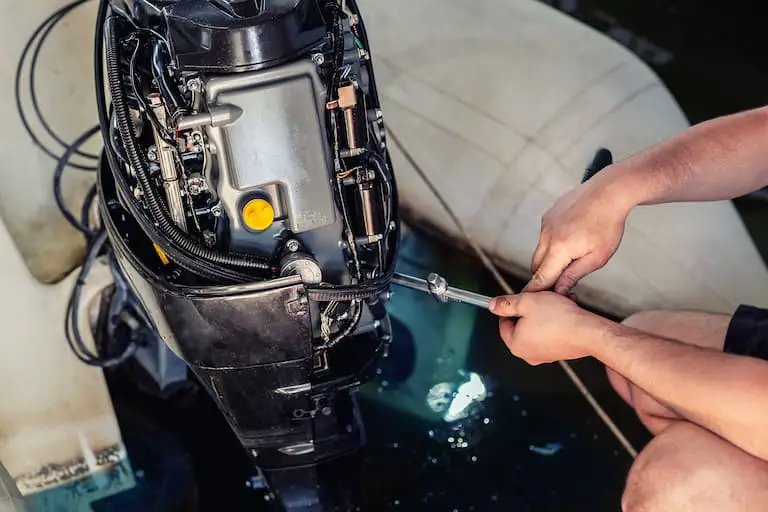
The greatest enemy of the motorboat engine is corrosion, and this is the number one thing that boaters should look out for. You must always ensure that your boat motor is clean to slow down the process of corrosion, especially after exposure to saltwater.
Freshwater, on the other hand, is far less harmful, but because the motor parts are metal, corrosion is still bound to occur over time. Other things that may cause rusting and deterioration include silt and algae. Check your boat for any signs of these after each outing.
The Process of Cleaning a Motorboat Engine
Cleaning your boat’s motor after an outing is non-negotiable. Cleaning the engine of any motorboat is vital because all of the buildup accumulated during its time in the water could quickly damage your craft.
Fortunately, you can easily clean a boat’s engine yourself if you have the right products.
The cleaning process involves flushing the engine with fresh, clean water. After that, a boat owner must apply a degreaser to remove any excess grease build-up. Finally, you’ll have to add an engine protectant. Here is a video on the cleaning process:
While you wash the engine, be sure to pay attention to all the crevices in the engine compartment to avoid leaving any salt on the motor. You can do this by employing extra tools such as a brush to ensure that every spot is salt and gunk-free.
However, if you have an inboard motor, you’ll likely want to have a professional clean it out as you might do more harm than good. Many moving parts are included in an inboard engine, and it’s easy to damage them accidentally.
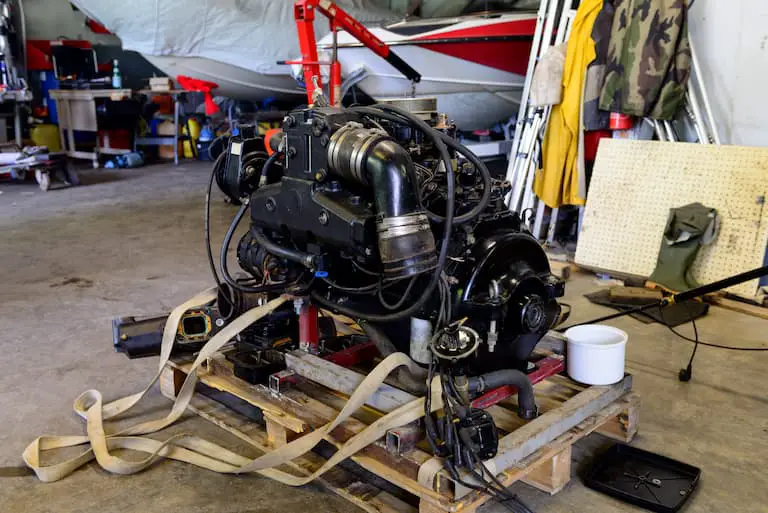
A corroded vessel is difficult to use and exposes you to accidents because parts like the shaft and propellers will lose efficiency. So, if you want your investment in a motorboat to be worth it, keep your vessel clean and corrosion-free.
When you purchase a boat, ask the seller which one they recommend you to use in saltwater. That’s because some motorboats come marked “saltwater edition.” These are more likely to be coated with stainless steel or aluminum, which can better withstand saltwater corrosion.
Inboard vs. Outboard For Saltwater – Summary
In summary, inboards are initially expensive and harder to clean when it comes to saltwater. However, if a boat owner has the resources and finances to maintain them, they will last longer than an outboard. On the other hand, outboard motors are easier to clean, and you can bring down the cost of cleaning further by buying the tools and doing it yourself.
